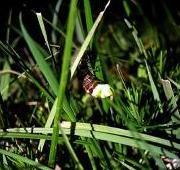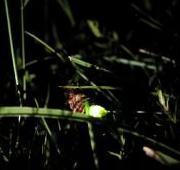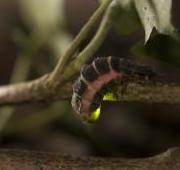 The glow worm is a medium to large sized invertebrate that is famous for having a green and yellow coloured light on the end of it's tail.
The glow worm is a medium to large sized invertebrate that is famous for having a green and yellow coloured light on the end of it's tail.  Glow worms are found inhabiting dense woodland and caves around the world with the exception of the Americas and glow worms are one of the few insects that are found inside the colder Arctic Circle. Glow worms are nocturnal animals which means that they are active during the dark night which is when their glowing rears can be seen.
Glow worms are found inhabiting dense woodland and caves around the world with the exception of the Americas and glow worms are one of the few insects that are found inside the colder Arctic Circle. Glow worms are nocturnal animals which means that they are active during the dark night which is when their glowing rears can be seen.


Glow worms are most commonly seen in the UK between June and October and their green-lit tails tend to show up most clearly when the sun goes down at dusk. Legend says that early humans used to use glow worms to mark paths and provide light in huts. Glow worms were thought to have some kind of magical power and so people would also use the glow worm in medicines.
Glow worms are omnivorous animals but they tend to have a very meat-based diet. Glow worms predominantly prey on snails and slugs which make up the majority of the glow worm's diet. Glow worms also prey on other insects and small invertebrates.
Due to their small size and the fact that they glow in the darkness, glow worms have numerous natural predators within their environment including spiders, large insects, birds, reptiles and centipedes.
Typically, the female glow worms lays between 50 and 100 eggs in moist areas, over a period of a few days. The tiny glow worm eggs are yellow in color and can take between 3 and 6 weeks to hatch depending on the climate (the warmer it is, the faster the glow worm eggs will hatch).
Glow worms are considered to be an animal species that is threatened with extinction as the glow worm population numbers are drastically decreasing. The main reason for the lower number of glow worms is thought to be the expansion of human civilisations. Glow worms are known to be particularly vulnerable to changes in their environment including habitat loss, noise and pollution.

